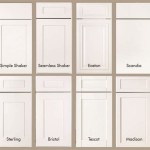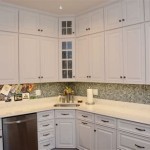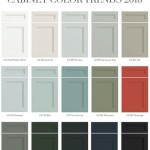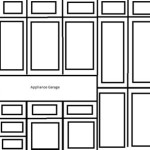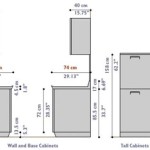Best Paint Brush for Kitchen Cabinets: Achieving a Flawless Finish
Selecting the appropriate paint brush is paramount when undertaking a kitchen cabinet painting project. The quality of the brush directly influences the smoothness, uniformity, and overall aesthetic appeal of the finished product. This article will delve into the critical factors to consider when choosing a paint brush for kitchen cabinets, examining the different types of brushes available and their suitability for various painting techniques and paint types.
The objective of painting kitchen cabinets is to achieve a factory-like finish, minimizing brush strokes and ensuring a durable, even coating. This requires a careful evaluation of brush materials, construction, and handling characteristics. By understanding these elements, both experienced and novice painters can select the optimal brush to achieve professional-looking results.
Understanding Brush Bristle Types: Natural vs. Synthetic
The primary distinction between paint brushes lies in the material used for their bristles: natural or synthetic. Each type possesses unique properties that make it more or less suitable for specific paint types and applications.
Natural bristle brushes are typically made from animal hair, most commonly hog or badger hair. These bristles have natural flags (split ends) that create tiny pockets to hold more paint, allowing for smoother application and reduced brush marks, particularly when used with oil-based paints, varnishes, and stains. The natural structure of the bristles also helps them to distribute paint evenly and efficiently. However, natural bristles absorb water, causing them to swell and become limp. This makes them unsuitable for water-based paints, as the swelling can lead to a loss of stiffness and control, resulting in uneven application and potential for brush stroke visibility.
Synthetic bristle brushes are manufactured from nylon, polyester, or a blend of both. These brushes are designed to mimic the performance of natural bristles while offering superior durability and resistance to water absorption. Synthetic bristles are an excellent choice for water-based paints, such as latex and acrylic paints, commonly used on kitchen cabinets. They maintain their shape and stiffness when wet, allowing for precise control and even application. High-quality synthetic brushes often feature tapered filaments, mimicking the flags of natural bristles, which enhances their ability to hold and release paint smoothly.
When choosing between natural and synthetic bristles for kitchen cabinets, the type of paint being used is the determining factor. For oil-based paints, a high-quality natural bristle brush is recommended. For water-based paints, a high-quality synthetic bristle brush is essential to avoid issues with swelling and loss of stiffness.
Brush Construction and Quality Indicators
Beyond the bristle material, the construction of the brush plays a crucial role in its performance and longevity. Several key features indicate the quality and suitability of a paint brush for kitchen cabinet projects. These features include the ferrule, handle, and bristle setting.
The ferrule is the metal band that secures the bristles to the handle. A high-quality ferrule is typically made of stainless steel or copper and is securely crimped or riveted to the handle. This ensures that the bristles remain firmly attached and prevents them from shedding during use. A loose or poorly constructed ferrule can lead to bristle loss and compromise the quality of the paint job. The ferrule should also be seamless to prevent paint from accumulating and hardening inside, which can make the brush difficult to clean and maintain.
The handle of the brush should be comfortable to hold and provide a good grip. Handles are typically made of wood or plastic. Wooden handles offer a traditional feel and can be more comfortable for extended use, while plastic handles are often more durable and resistant to moisture. Ergonomic handle designs are available, which can reduce hand fatigue during lengthy painting sessions. The length of the handle is also a consideration. Shorter handles provide more control for detail work, while longer handles can be useful for reaching higher areas or painting larger surfaces.
The setting of the bristles within the ferrule is another critical indicator of quality. The bristles should be densely packed and securely anchored to prevent shedding. A well-constructed brush will have bristles that are uniform in length and neatly arranged, ensuring a smooth and even paint application. The shape of the bristle pack also influences the brush's performance. Brushes with a chisel tip are ideal for cutting in edges and painting trim, while those with a flat or square tip are better suited for painting larger, flat surfaces.
To assess the quality of a brush, gently flex the bristles to check for resilience and springiness. A high-quality brush will return to its original shape quickly. Also, tug lightly on the bristles to verify that they are securely attached to the ferrule. Minimal shedding is acceptable, but excessive shedding indicates a poorly constructed brush.
Brush Size, Shape, and Application Techniques
The size and shape of the paint brush should be carefully considered based on the specific areas being painted on the kitchen cabinets and the desired application technique. Different brush sizes and shapes are better suited for various tasks, such as painting flat surfaces, cutting in edges, and applying detailed finishes.
For painting large, flat surfaces such as cabinet doors and side panels, a wider brush, typically 2 to 2.5 inches, is recommended. This allows for faster coverage and reduces the number of brush strokes required to achieve a uniform finish. A flat brush is the ideal shape for these surfaces, as it provides even distribution of paint and minimizes the potential for streaking.
For cutting in edges and painting trim around the cabinet frames, a smaller brush, typically 1 to 1.5 inches, is more appropriate. A brush with a chisel tip is particularly useful for this task, as it allows for precise control and creates clean, sharp lines. The chisel tip enables the painter to apply paint accurately along edges and corners without bleeding onto adjacent surfaces.
For applying detailed finishes, such as glazes or antiquing techniques, a small, artist-style brush may be necessary. These brushes offer exceptional control and allow for the application of intricate details. Round brushes are often used for detail work, as they provide a fine point for precise application.
The choice of brush size and shape should also take into account the type of paint being used. Thicker paints may require a stiffer brush to apply evenly, while thinner paints may benefit from a softer brush to minimize brush strokes. It is advisable to experiment with different brush sizes and shapes to determine which ones provide the best results for the specific paint and application technique being used.
Proper brush care and maintenance are essential to prolong the life of the brush and ensure optimal performance. After each use, the brush should be thoroughly cleaned with the appropriate solvent for the type of paint used. For water-based paints, warm water and soap are sufficient. For oil-based paints, mineral spirits or paint thinner are required. The brush should be rinsed thoroughly until all traces of paint are removed. After cleaning, the brush should be reshaped and allowed to dry completely before being stored. Storing brushes properly, either hanging or lying flat, will prevent the bristles from becoming bent or damaged.
In conclusion, selecting the optimal paint brush for kitchen cabinets involves careful consideration of bristle type, brush construction, and size and shape. By understanding these factors, painters can choose the appropriate brush for their specific project needs and achieve a flawless, professional-looking finish on their kitchen cabinets. Investing in high-quality brushes and maintaining them properly will result in superior results and prolong the life of the brushes, making them a valuable investment for any painting project.

5 Best Paintbrushes For Cabinets Brush Vs Spray Which Is Better

The Best Paint Brushes For A Perfectly Smooth Finish

The Best Paint Brushes For Cabinets Including Touch Ups Small Details And Wood

The Best Paint Brushes For Furniture

The Best Paint Brushes For Cabinets Of 2024 Picks From Bob Vila

The Best Paint Brushes For A Perfectly Smooth Finish

The Best Paint Brushes For Furniture

Foam Brush Vs Paint When To Use Each A Erfly House

What You Need To Know Before Painting Cabinets The Palette Muse

Best Way To Paint Cabinets Spray Or Brush
Related Posts

